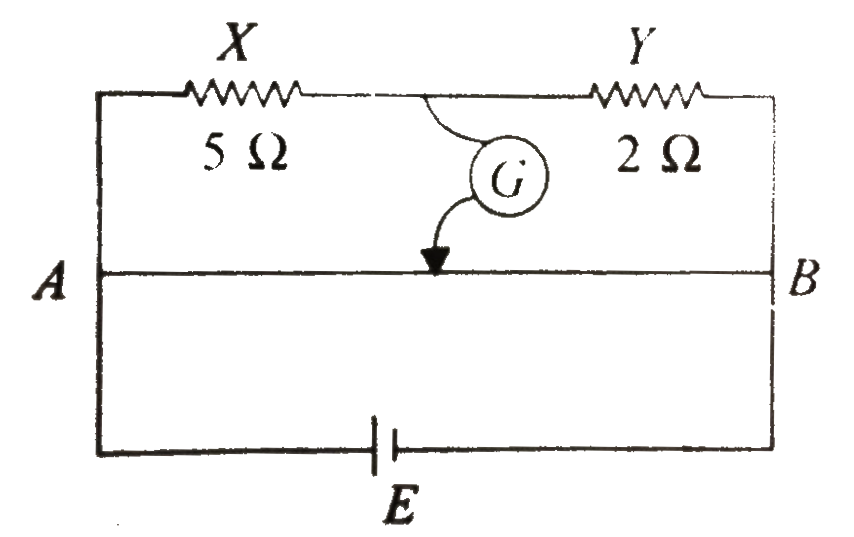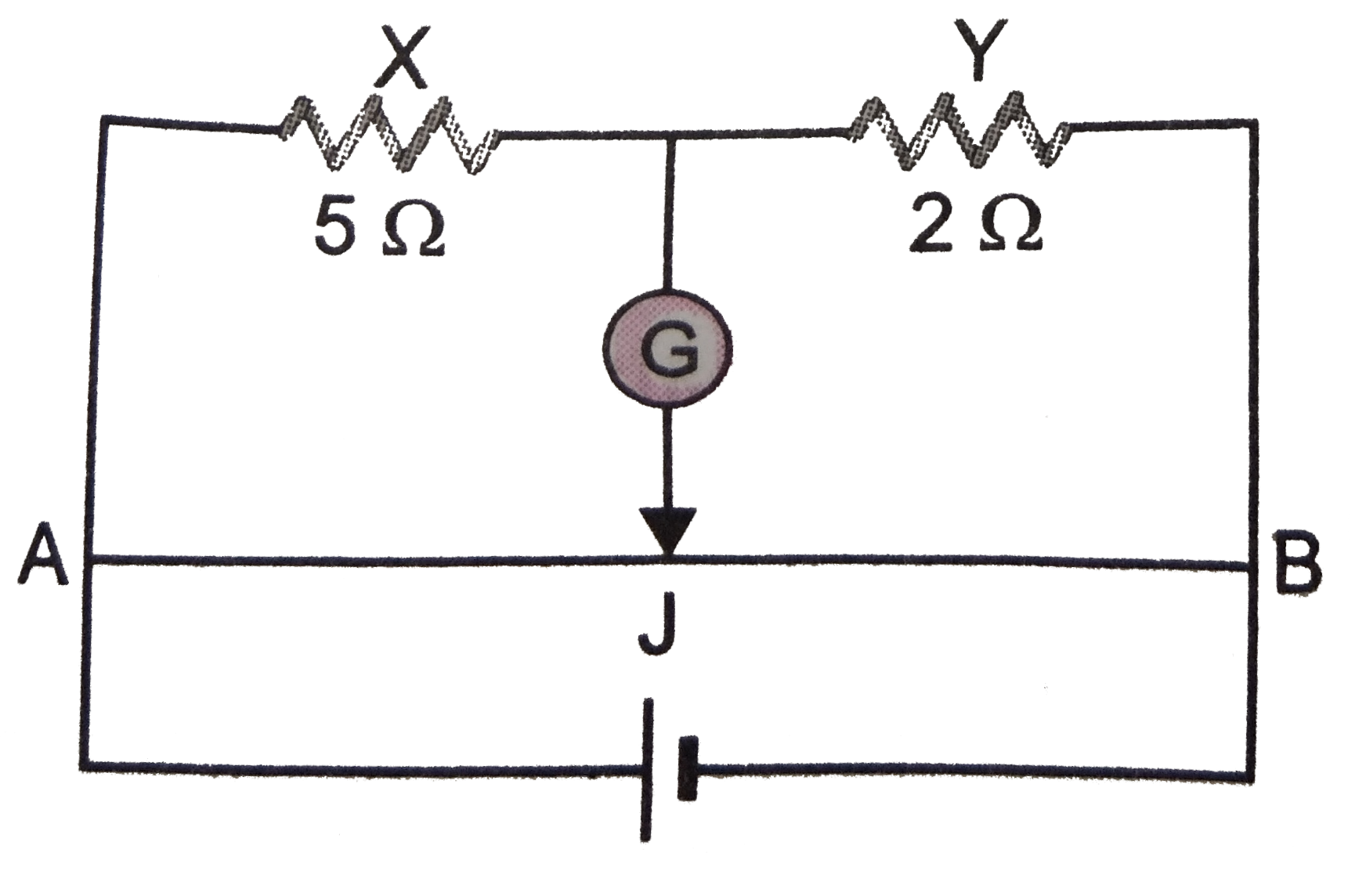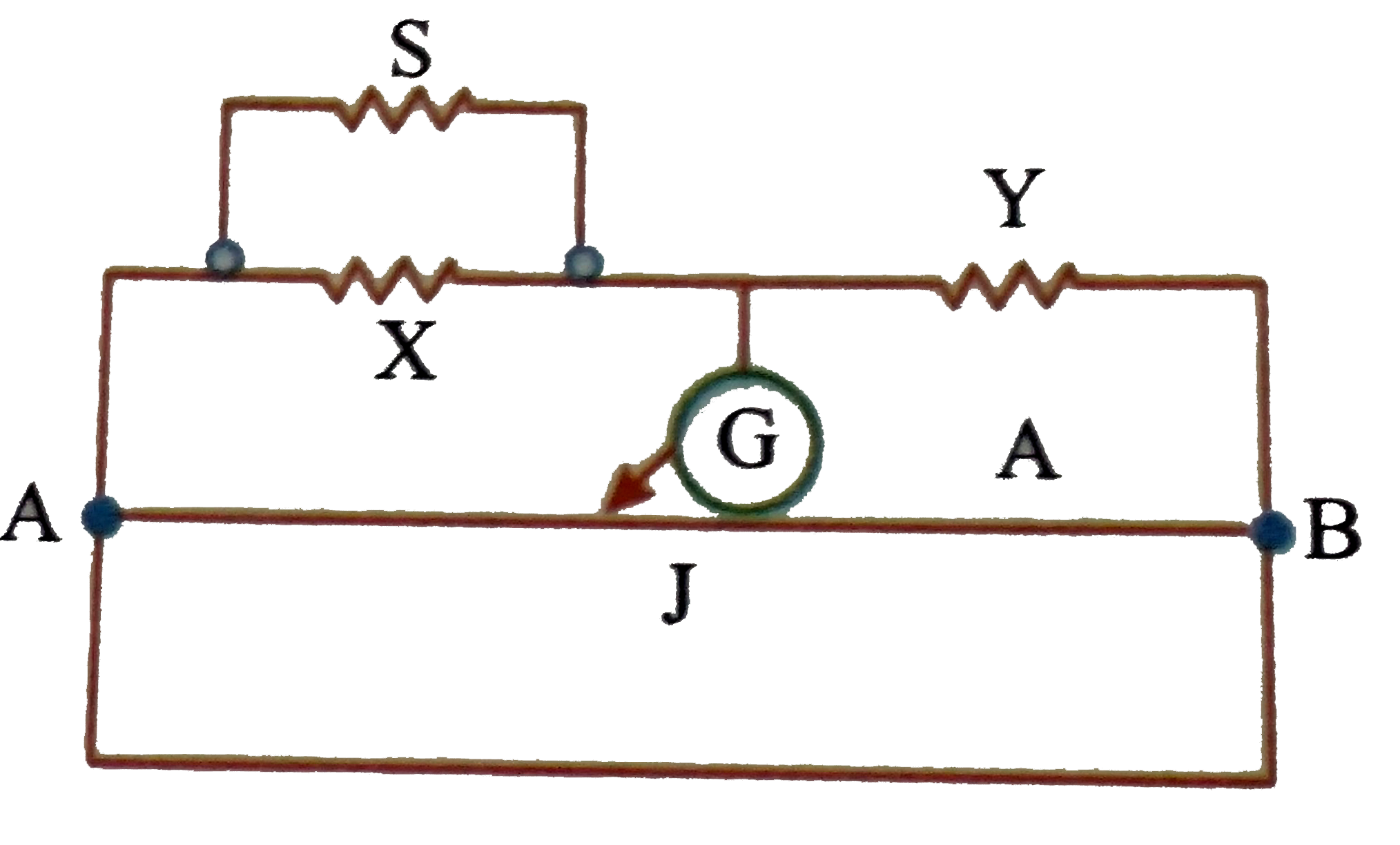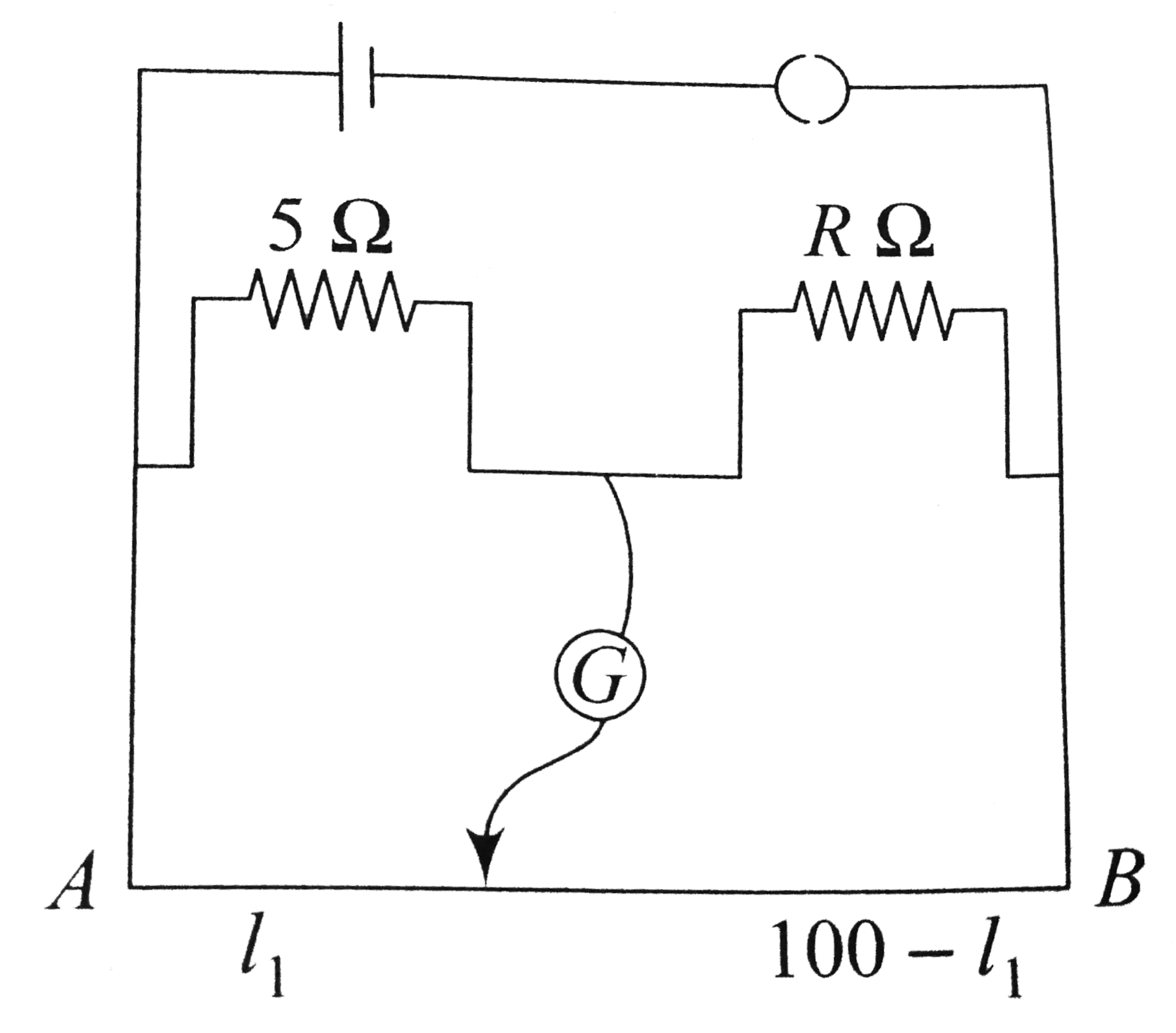In the meter bridge experiment , the length AB of the wire is 1m. The resister Xand Y have vlaues 5Ω and Ω respectively. When a shunt resistance S is connected to X, the balancing point is found to be 0.625 m form A. Then the resistance of the shunt is

5Ω
10Ω
7.5Ω
12.5Ω
The correct Answer is:A
I=I1+I2
ε−VR=ε1−Vr1+ε2−Vr2
Rightarrow 24−V3=3(10−V+18−2V)
V=5.14V
ΔV=24−5.14=18.86
By ohm's law. 1=ΔVR=18.863=6A

Topper's Solved these Questions
Similar Questions
In the simple potentionmeter circuit, where the length AB of the potentiometer wire is 1m, the resistors X and Y have values of 5Ω and 2Ω, respectively. When X is shunted by a wire, the balance point is found to be 0.625m from A. What is the resistance of the shunt?

View SolutionIn the simple Wheatstone bridge circuit, where the length AB of bridge circuit wire is 1m the resistance X and Y have value 5Ω and 2Ω respectively, When X is shuted by a length of a wire the balance point to found to be 0.625m from A. What is the resistance of the shunt ? If the shunt is 0.75m long end 0.25 mm in diameter, what is the respectivity of the material of the wire ?

View Solution
Knowledge Check

In the meter bridge experiment, the length Ab of the wire is 1m. The resistors X and Y have values 5Ω and 2Ω respectively. When a shunt resistance S is connected to X, the balacing point is found to be 0.625 m from A. Then the resistance of the shunt isA5ΩB10ΩC7.5ΩD12.5ΩIn the simple potentionmeter circuit, where the length AB of the potentiometer wire is 1m, the resistors X and Y have values of 5Ω and 2Ω, respectively. When X is shunted by a wire, the balance point is found to be 0.625m from A. What is the resistance of the shunt?
 A10B2C4D15
A10B2C4D15The resistance in the two arms of the meter bridge are 5Ω and RΩ, respectively. When the resistance R is shunted with an equal resistance, the new balance point is 1.6l1.
The resistance R is
 A10ΩB15ΩC20ΩD25Ω
A10ΩB15ΩC20ΩD25Ω
The resistance in the two arms of the meter bridge are 5Ω and RΩ, respectively. When the resistance R is shunted with an equal resistance, the new balance point is 1.6l1.
The resistance R is

View SolutionThe resistance in the two arms of the meter bridge are 5Ω and RΩ, respectively. When the resistance R is shunted with an equal resistance, the new balance point is 1.6l1.
The resistance R is

View SolutionWhat is end error in a metre bridge ? How is it overcome ? The resistances in the two arms of the metre bridge are R=5Ω and S respectively. When the resistance S is shunted with an equal resistance, the new balance length found to be 1.5l1, where l1 is the initial balancing length. Calculate the value of S.

View SolutionIn potentiometer experiment when terminates of the cell is at distance of 52 cm, then no current flows through it. When 5ohm shunt resistance is connected in it then balance length is at 40 cm. The internal resistance of the cell is
View SolutionThe resistance in the two arms of the meter bridge are 5Ω and RΩ, respectively. When the resistance R is shunted with an equal resistance, the new balance point is 1.6l1.
The resistance R is

View Solution
